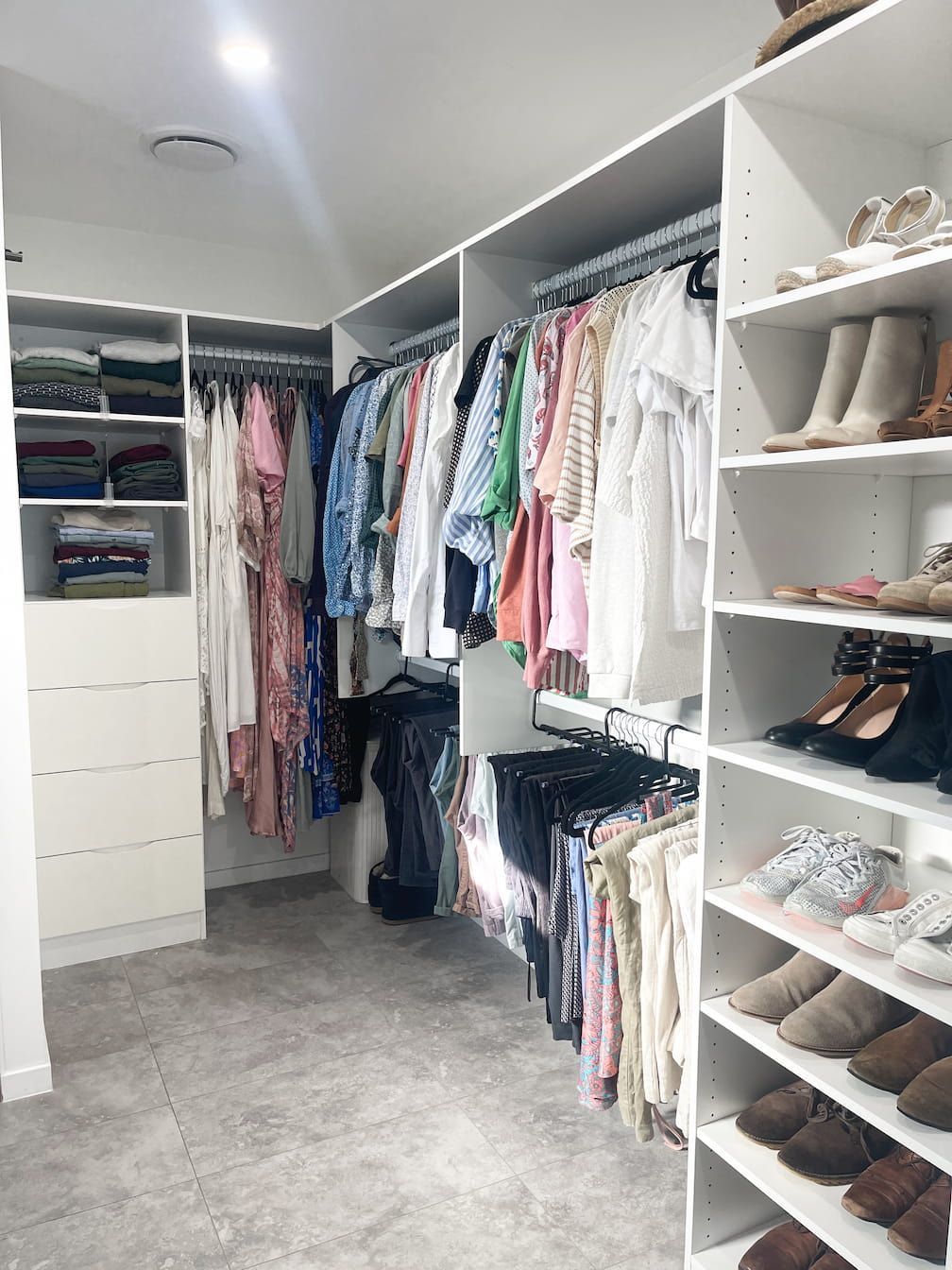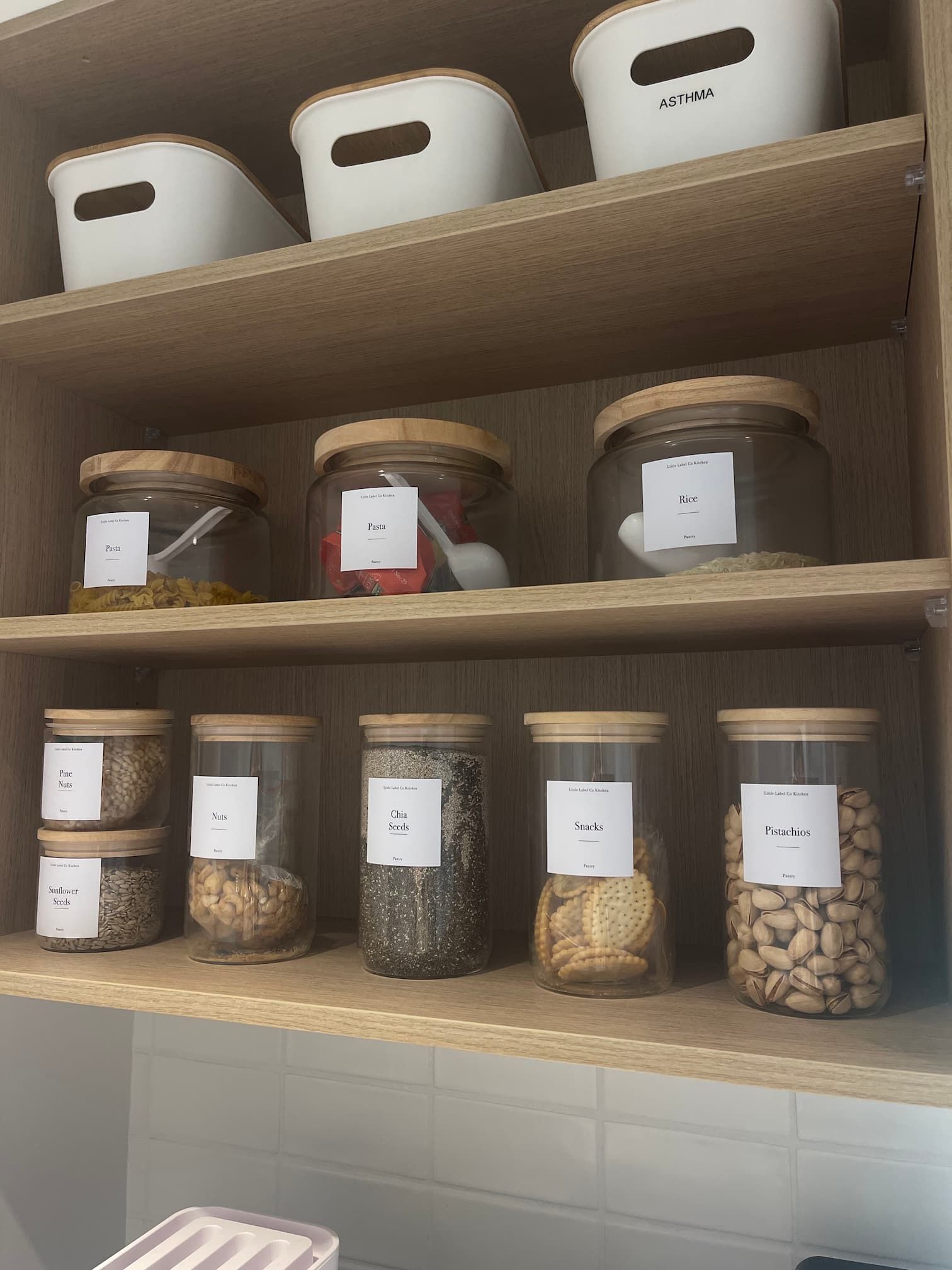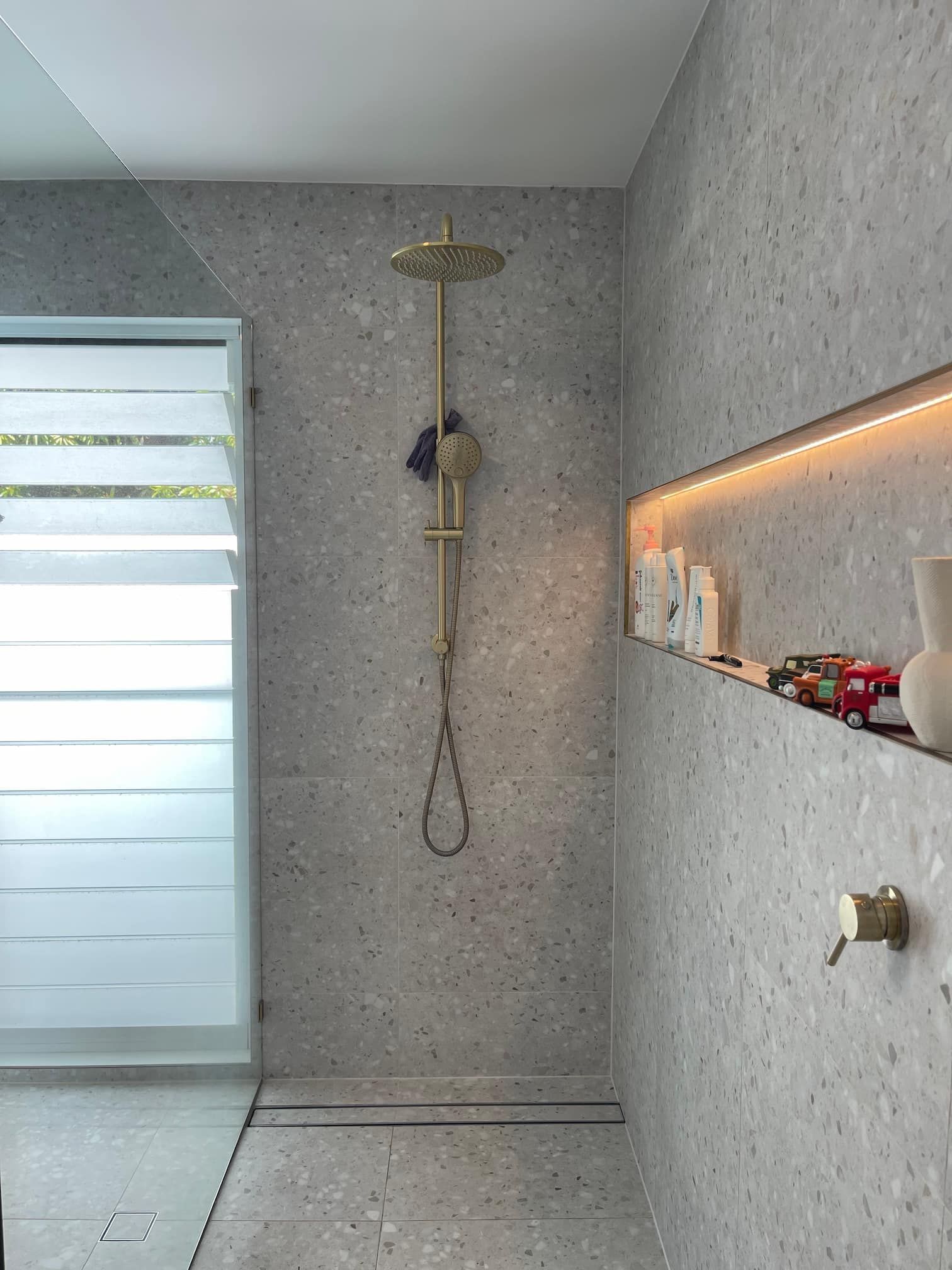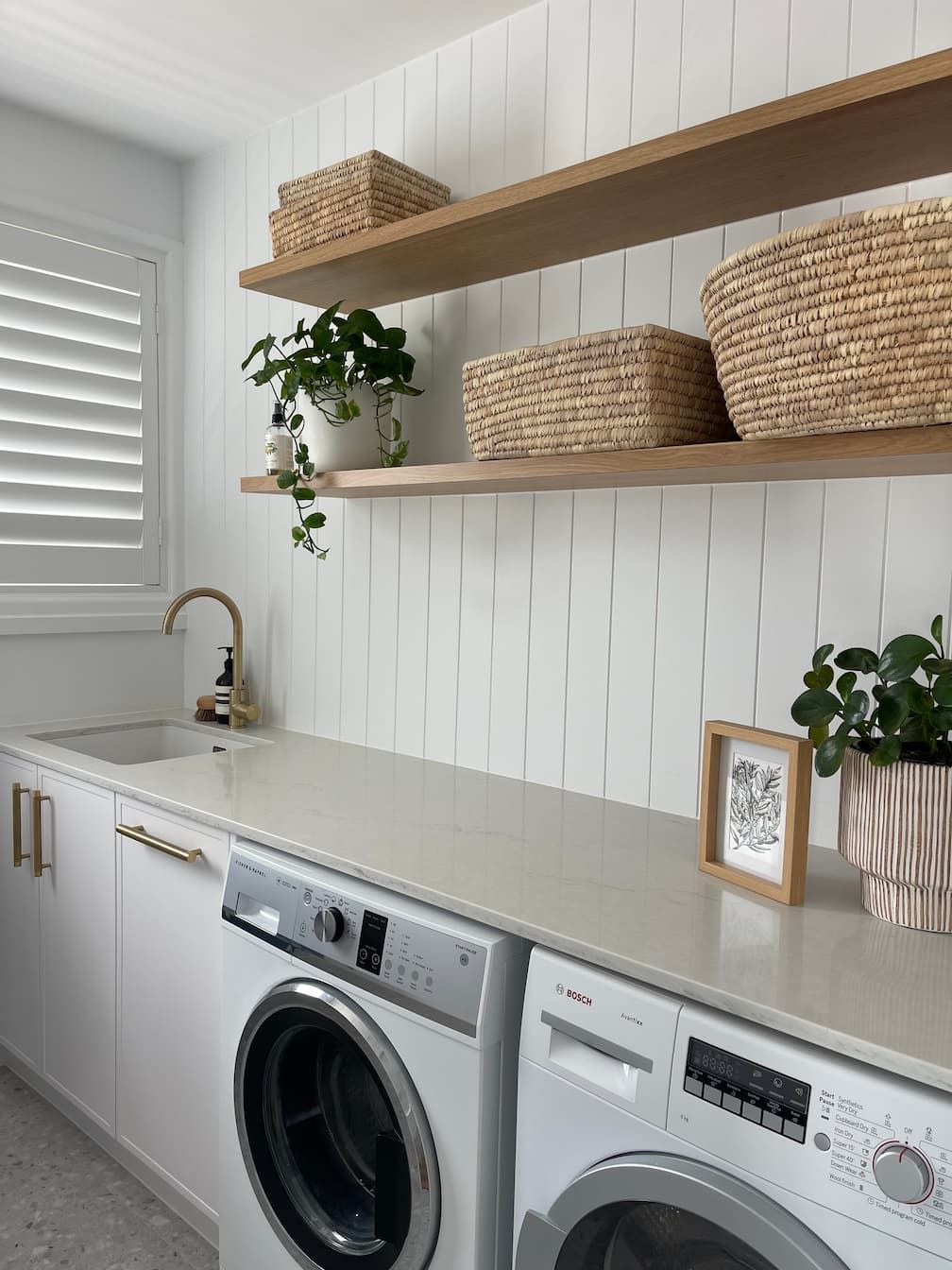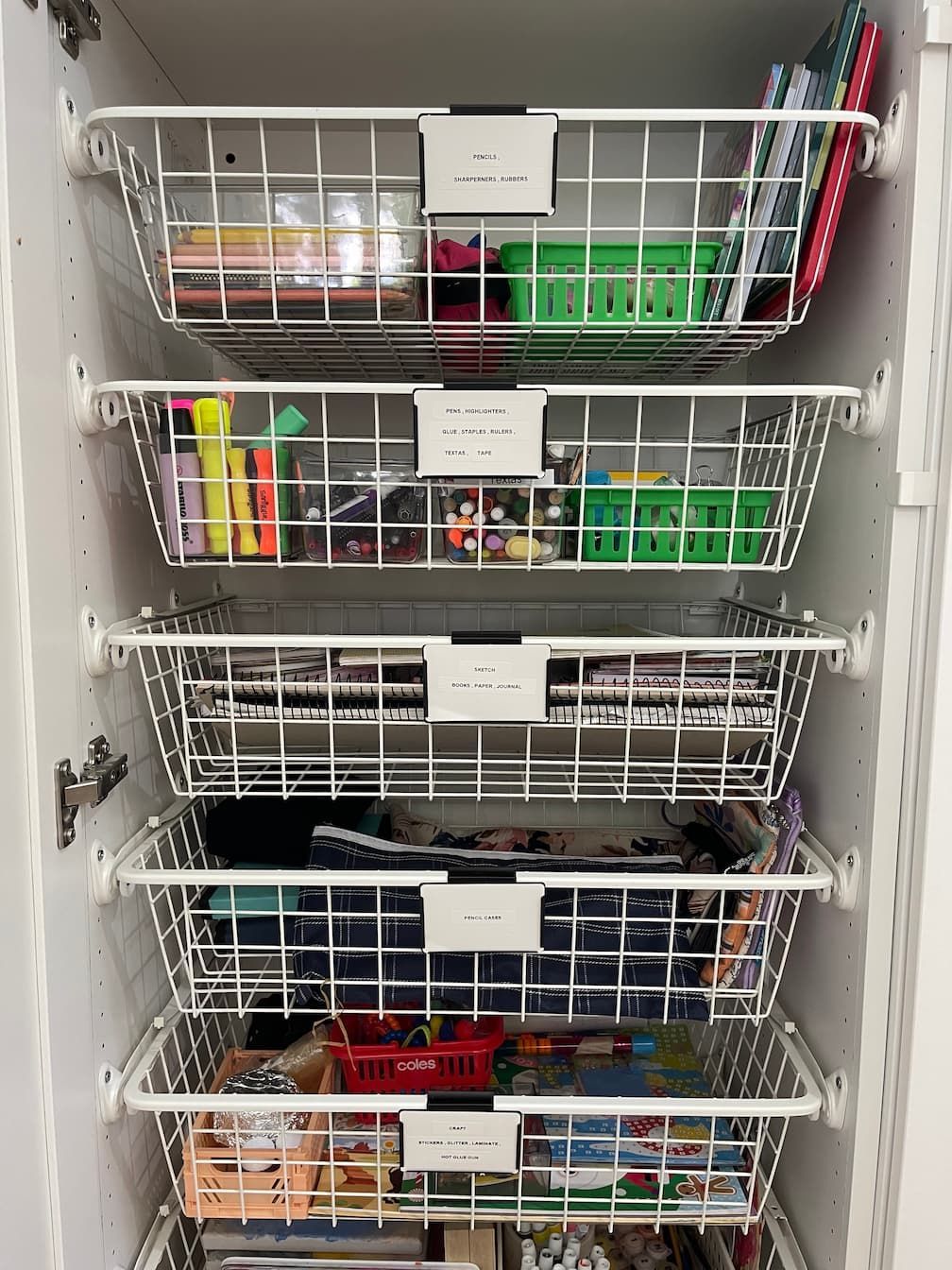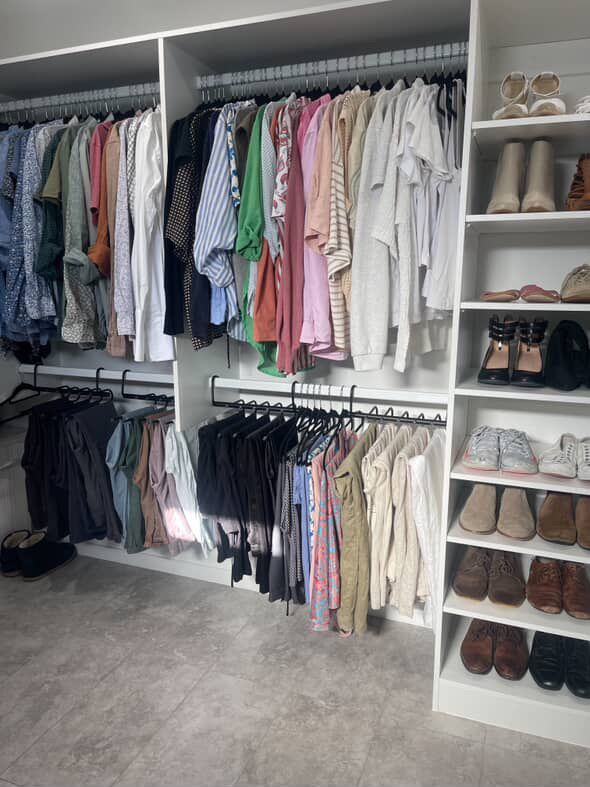Home Organising Tips
A well-organised home isn’t just about neat shelves and tidy cupboards—it’s about creating spaces that work for you, making daily life smoother and less stressful. At Scrub & Sort .Co, we believe that organisation should be practical, sustainable, and achievable, no matter how busy your household is.
In this guide, we’ll share our favourite home organising tips, with a focus on six key areas: bathrooms, kitchens, laundries, garages, home offices, and kids’ rooms. Each of these spaces has its own challenges, but with the right approach, you can transform them into functional, clutter-free zones.
1. Bathroom Organisation Tips
Bathrooms are often small, busy spaces, so smart organisation is key.
- Declutter first: Toss expired skincare, old makeup, and unused toiletries. These quickly build up in cabinets and drawers.
- Use vertical space: Install shelves above toilets or doors for extra storage.
- Drawer organisers: Keep items like toothbrushes, razors, and hair ties separated.
- Clear containers: Transparent bins under the sink make it easy to find cleaning products and spare toiletries.
- Towel storage: Roll towels into baskets to save space and keep them neat.
Pro tip: Adopt the “one in, one out” rule for products. If you buy a new moisturiser, finish or recycle the old one before opening it.
2. Kitchen Organisation Tips
The kitchen is the heart of the home, but without systems in place, it can quickly become chaotic.
- Declutter benchtops: Only keep appliances you use daily (like kettles or toasters) out—store the rest.
- Pantry zones: Group items into categories such as baking, breakfast, snacks, and canned goods. Use baskets or tubs to contain each zone.
- Label everything: Clear labels on jars and containers reduce waste and make cooking faster.
- Drawer dividers: Keep utensils tidy and stop them from jumbling together.
- Fridge organisation: Use bins for produce, dairy, and condiments. Wipe shelves regularly to avoid spills becoming sticky messes.
Pro tip: Rotate pantry and fridge stock by placing older items at the front. This helps prevent food waste and keeps meals budget-friendly.
3. Laundry Organisation Tips
Laundries are workhorse areas, and they often double as storage. Streamlining them saves time.
- Sort stations: Use labelled hampers for lights, darks, and delicates. This cuts sorting time in half.
- Wall hooks: Hang brooms, mops, and ironing boards to free up floor space.
- Overhead shelves: Store infrequently used items like seasonal blankets or cleaning supplies.
- Detergent decanting: Pour powders or liquids into matching, labelled containers to reduce clutter and spills.
- Folding bench: If space allows, add a counter above your washing machine or dryer for folding clothes straight from the dryer.
Pro tip: Keep a small basket nearby for stray socks—it avoids the dreaded odd-sock pile.
4. Garage Organisation Tips
The garage is often the “dumping ground” for things we don’t know where else to put. With the right systems, it can be functional again.
- Declutter seasonally: Donate or recycle unused sporting goods, tools, and furniture twice a year.
- Wall storage: Pegboards or slat walls are excellent for hanging tools and garden equipment.
- Ceiling racks: Use overhead storage for camping gear or bulky seasonal items.
- Zoned storage: Create zones—tools, sports, gardening, car care—so everything has a home.
- Clear tubs: Use stackable tubs with labels instead of random cardboard boxes.
Pro tip: Don’t overfill your garage—aim to leave space to actually park the car. This forces you to be selective about what stays.
5. Home Office Organisation Tips
With more people working from home, keeping your workspace organised is essential for productivity.
- Declutter the desk: Keep only what you use daily—computer, notepad, pen.
- Cable management: Use clips, sleeves, or boxes to hide messy cords.
- File storage: Digitise paperwork where possible, and keep physical files in labelled folders.
- Shelving systems: Floating shelves free up desk space for books and supplies.
- Lighting: A clear, well-lit space feels cleaner and reduces eye strain.
Pro tip: End each workday with a “reset”—spend five minutes clearing your desk so you start fresh in the morning.
6. Kids’ Room Organisation Tips
Kids’ rooms are notorious for clutter, but with the right systems, they can stay manageable.
- Toy rotation: Keep some toys stored away and rotate them every few weeks—this reduces clutter and keeps kids engaged.
- Open bins: Use easy-access baskets or tubs so children can help pack up.
- Labelling with pictures: For younger kids, use picture labels (e.g., cars, dolls) to make organising fun and simple.
- Under-bed storage: Great for off-season clothes, bedding, or toys.
- Wardrobe hacks: Install low-hanging rails so kids can reach and put away their own clothes.
Pro tip: Involve kids in the organising process—it teaches responsibility and makes them more likely to keep things tidy.
General Organising Habits That Make a Big Difference
Beyond individual rooms, a few habits can make home organisation easier overall:
- Declutter often: Set aside 10 minutes each day or one weekend a month.
- Use labels: Clear labelling removes confusion and keeps systems in place long-term.
- Think vertical: Walls, doors, and ceilings provide underused storage opportunities.
- Invest in quality storage: Sturdy, stackable bins and baskets last longer and keep spaces tidy.
- Adopt a “reset” routine: Tidy each night before bed—it prevents small messes from snowballing.
Conclusion:
Organising your home doesn’t have to be overwhelming. By breaking it down room by room—bathrooms, kitchens, laundries, garages, home offices, and kids’ rooms—you can create functional, clutter-free spaces that support your lifestyle.
At Scrub & Sort .Co, we specialise in helping families across the Gold Coast and Northern Rivers organise their homes. Whether you need a one-off decluttering session or ongoing support, we can transform your home into a calm, practical, and beautiful space.
Written by Isabelle
Isabelle, the founder of Scrub & Sort .Co, comes from a background in interior and product design. With a natural eye for how a home can look, feel, and function, she blends creative styling with practical systems that truly work for everyday living.



